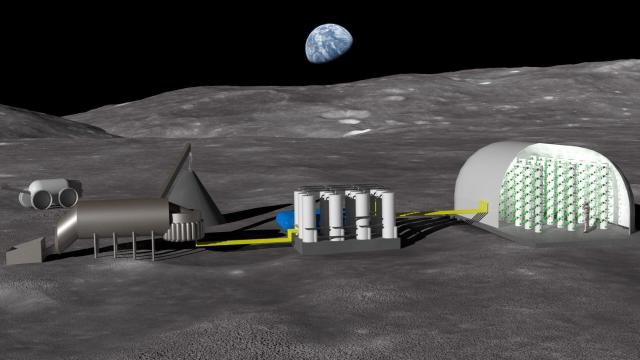Lunar astronauts might have to get their overalls ready, because the Moon could be the next great frontier for agriculture. The European Space Agency and Norwegian lunar agriculture company Solsys Mining have teamed up on a project to study how lunar soil could be used to produce fertiliser.
The project builds upon prior research demonstrating that plants can grow in lunar soil, albeit not very well. One of the main challenges is that lunar regolith lacks certain amounts of nitrogen compounds — a key ingredient in soil that allows flora to flourish. Another issue is that lunar soil gets tightly compact when wet, which creates trouble for plants trying to put down healthy and strong roots.
To foster plant growth using lunar soil as a resource, ESA, Solsys Mining, Norway’s Geotechnical Institute, and the Centre for Interdisciplinary Research in Space are turning to hydroponics, in which plants are grown in nutrient-rich water instead of soil. This current research project is studying the best methods of leeching the nutrients out of lunar soil.
The idea is that astronauts can extract nutrients in lunar regolith to create fertiliser for hydroponic farming. These nutrients could be pulled from soil using a processing plant and then dissolved into water, all on the Moon’s surface. The resulting nutrient-rich water can then be pumped into a greenhouse for hydroponic farming, a crucial part of maintaining a long-term human presence on the Moon.
“This work is essential for future long-term lunar exploration,” Malgorzata Holynska, ESA materials and processes engineer, said in an ESA release. “Achieving a sustainable presence on the Moon will involve using local resources and gaining access to nutrients present in lunar regolith with the potential to help cultivate plants. The current study represents a proof of principle using available lunar regolith simulants, opening the way to more detailed research in future.”
The study, which has a budget of €100,000, or roughly $US106,000 ($147,149), began in December 2022 and is expected to last until December 2023.
More: New NASA Images Reveal the Grim State of China’s Mars Rover
